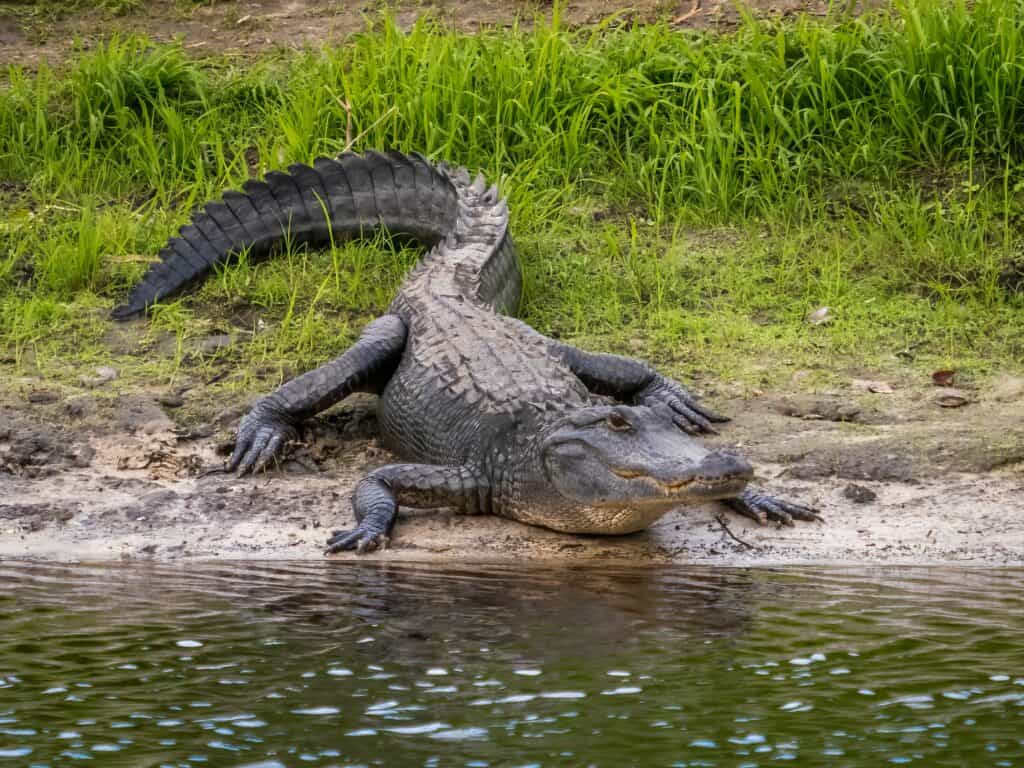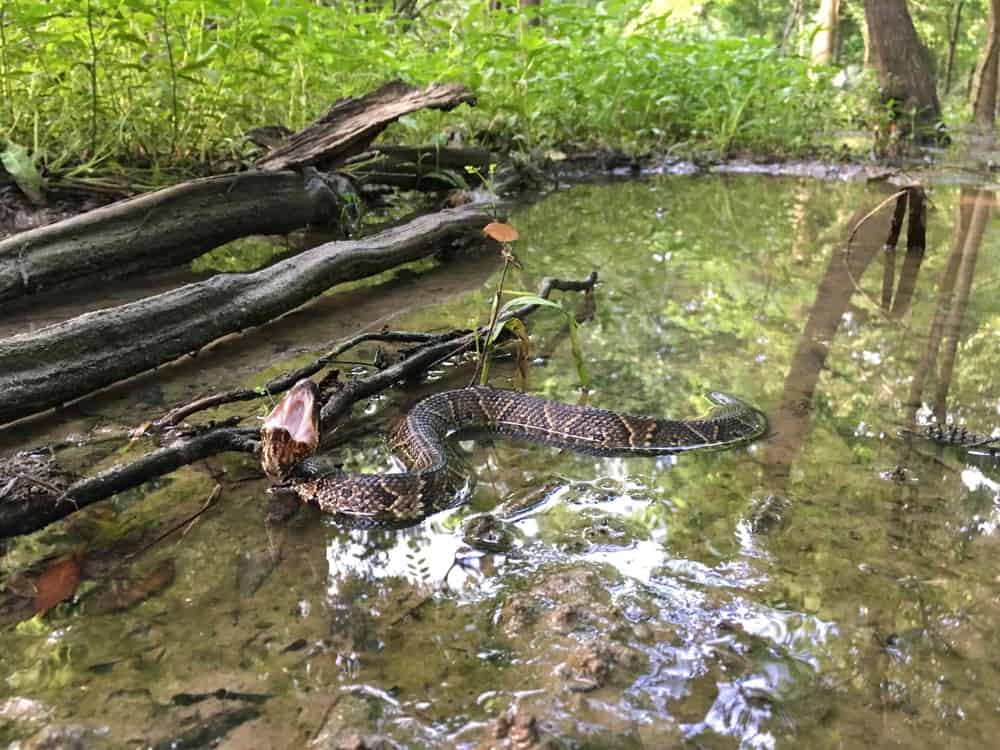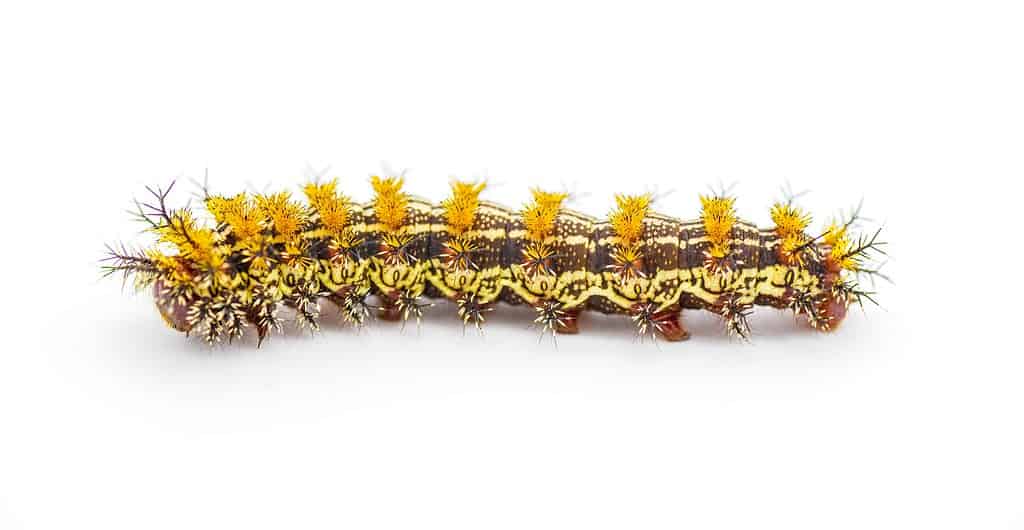The southeast is home to some of the most diverse flora and fauna in the country. In hot, humid climates, animals thrive and quickly reproduce among lush, dense marshes, and swamps. Louisiana is a beautiful state with much to offer, but its natural environment is home to many creatures, including those harmful to humans and pets. So, when you are swimming, boating, or fishing, you want to be aware of the possible dangers around you. Discover the most dangerous animals lurking in Louisiana’s lakes and marshes, including where they hide and how deadly they are to humans. Here’s a preview:

About Louisiana’s Lakes and Marshes

Lake Pontchartrain is the largest lake in Louisiana, covering 400,000 acres. It is one of the biggest wetlands along the Gulf of Mexico.
©Mark Runde/Shutterstock.com
Louisiana is rife with water from coastlines, swamps, marshes, rivers, lakes, and deltas. There are over 50 lakes in the state, including natural and artificial. Lake Pontchartrain is the largest lake in Louisiana, covering 400,000 acres. Its brackish water is one of the most significant wetlands along the Gulf of Mexico.
Read more about the largest lakes in Louisiana here.
While there are only ten rivers in the state, they cover 53,000 miles. The Mississippi River is the longest in Louisiana. Its delta basin runs through New Orleans, emptying into the Gulf of Mexico.
But Louisiana’s salt marshes are unrivaled, featuring the most acreage than any other state. In total, Louisiana’s wetlands cover three million acres. And they are vitally important to many plants and animals. The Atchafalaya Basin is the largest wetland in the United States. You can find it in South Central Louisiana.
Dangerous Animals Found in Louisiana’s Lakes and Marshes
Louisiana has an abundant supply of water all across the state. And where there’s water, there’s life. And sometimes, that life can be in the form of dangerous creatures lurking in murky swamps and lakes. Being prepared is the key to safely enjoying the beauty of this southeast state. Look out for these three dangerous animals lurking in Louisiana.
American Alligator

In Louisiana, American
alligators
are most prevalent in lakes, coastal marshes, and the Atchafalaya Basin.
©Jim Schwabel/Shutterstock.com
Alligators are no joke in the Southern U.S. In fact, Louisiana and Florida have the largest gator populations in the world. There are around two million alligators across the Bayou State at any time of the year. And they live in lakes, ponds, rivers, swamps, canals, and other wetlands throughout the state. But they are most prevalent in lakes, coastal marshes, and the Atchafalaya Basin. Caddo, Cypress, and Martin Lakes are some of the most infested in the state. You will often find them in shallow water along the edge of lakes, lurking underneath vegetation. They can be difficult to spot as they tend to blend with the environment. Look for their eyes that peek out of the water.
Check out this article for more information about alligator-infested lakes in Louisiana.
Water Moccasin

Cotton mouths are semi-aquatic species that can be found in swamps, streams, bayous, and ponds throughout the state.
©Joe Farah/Shutterstock.com
Water moccasins, also known as cottonmouths, are one of the most common water snakes in Louisiana. And they are the only venomous water snake species in the state. These highly venomous snakes can attack humans in or out of the water, injecting a powerful hemotoxin that destroys blood cells and tissues. Water moccasin bites require immediate medical attention. This semi-aquatic species can be found in swamps, streams, bayous, and ponds throughout the state.
Bull Shark

Bull sharks are very common in Louisiana estuaries. There have even been reported shark attacks at Lake Pontchartrain.
©Harry Collins Photography/Shutterstock.com
Most people don’t associate sharks with lakes, but bull sharks can survive in both salt and freshwater, making them a double threat. This species swims up estuaries, eventually making its way to lakes and rivers. And bull sharks are very common in Louisiana estuaries. Lake Pontchartrain has even had its share of shark attacks. These sharks also make their way into swamps and bayous. Some are even seen 900 miles up the Mississippi River. To prevent bull shark attacks, don’t stray too far from the shoreline, and always stay with a buddy. And be cautious around murky water, which is where they like to hunt. If there have been reported sightings in the area, stay out of the water.
Honorable Mention—More Dangerous Animals of Louisiana

Hemileuca maia, buck moth
caterpillar
, looks harmless but is quite dangerous.
©Chase D’animulls/Shutterstock.com
Brown Recluse—The brown recluse is a spider native to Louisiana, typically light to medium brown in color and measuring about 1/2 to 1 inch in length. They are distinguished by a dark violin-shaped marking on their backs. Brown Recluses are dangerous to humans as they possess a venomous bite, capable of causing tissue necrosis, fever, chills, nausea, and other symptoms.
Eastern Diamondback—The eastern diamondback is a species of rattlesnake native to Louisiana, typically measuring up to 7 feet in length. They are distinguishable by the diamond-shaped pattern along their backs and rattles at the end of their tails. These snakes are dangerous to humans as they possess a venomous bite, capable of causing tissue necrosis, fever, chills, nausea, and other symptoms.
Buck Moth Caterpillar—The buck moth caterpillar is a species of caterpillar native to Louisiana, typically orange or yellow in color and measuring up to 3 inches in length. They are distinguishable by the long, hair-like projections all over their bodies. These caterpillars are dangerous to humans as their hair-like projections can cause sharp, stinging irritation to the skin when touched.
Harlequin Eastern Coral Snake—The Harlequin Eastern Coral Snake is a species of snake native to Louisiana, typically black, red, and yellow in color and measuring up to 3 feet in length. They are distinguishable by the red, yellow, and black stripes along their bodies. These snakes are dangerous to humans as they possess a venomous bite, capable of causing tissue necrosis, fever, chills, nausea, and death.
The photo featured at the top of this post is © iStock.com/undefined undefined
Thank you for reading! Have some feedback for us? Contact the AZ Animals editorial team.






